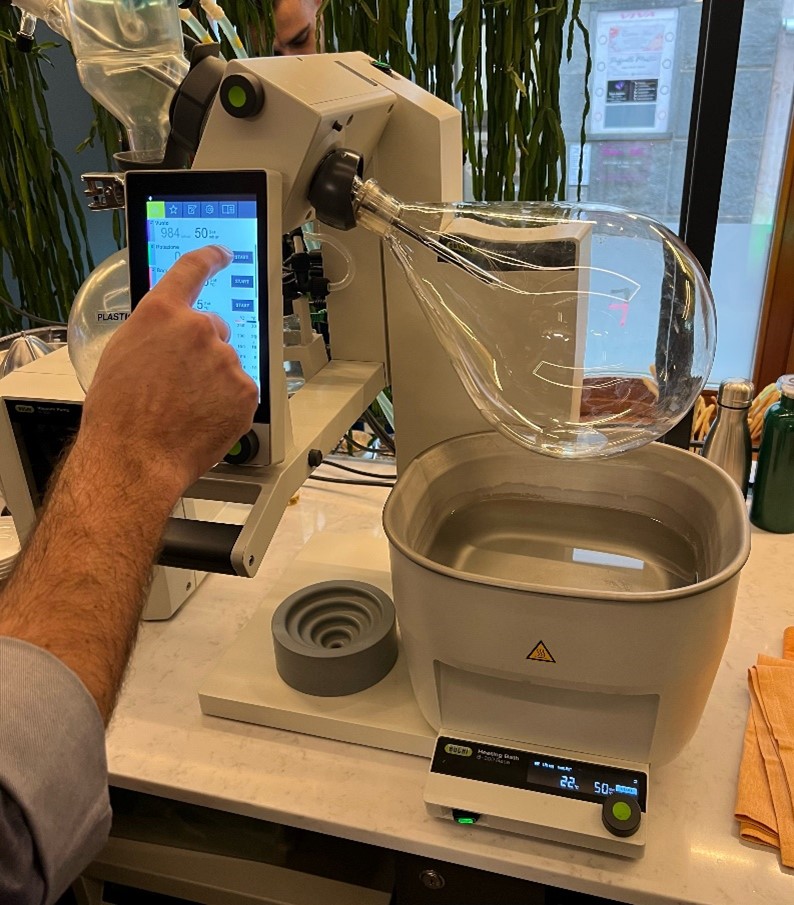By Adam and Larry Mogelonsky
To enjoy the summer, one often needs a good cocktail. So, why not make it the most inspirational cocktail imaginable? For this, let’s dive into some ‘bartech’ to see how you can innovate in the restaurant and ramp up revenues in the process.
Implementing change at any level of a hotel’s operations is always difficult for any number of reasons, and yet from the guest’s perspective often it’s the little touches that stand out to make the experience exceptional. While the two of us are perpetually bullish on technological upgrades and the growth of wellness at hotels, even the introduction of a fancy new cocktail at the hotel bar can have a profound impact on guest satisfaction, loyalty and return visits.
We call this the ‘halo effect’ where, even though a restaurant or spa may be departmentally sequestered from the guestrooms in the back of house, in the guest’s mind they are wholly connected. A great massage spurs positive sentiments and word of mouth for a hotel stay. Ditto for a memorable meal in the property’s restaurant. And take heed that this is also a double-edged sword, where a bad encounter in the restaurant or at another outlet on premises can reflect poorly onto the hotel experience, regardless of how this entity’s management is integrated.
This brings us to our long-time friend, Carlo Fontana, owner and operator of both the Lugano Dante in the center of Lugano, Switzerland as well as its onsite Flamel Restaurant and Bar which prides itself on being at the cutting edge of bar technology. Vowing to give patrons a contemporary yet unforgettable experience, the mission was to highlight the local tastes that are expressive of the Swiss countryside while elevating the concept of mixology by using only fresh raw materials and having every single drink produced entirely in-house.
The Equipment
This is where it gets technical, but as they say: the story is in the specificity. In other words, while many will conceptualize an F&B outlet as a purveyor of local culinary fare, it is still rare for this abstract messaging to translate into something tangible that resonates with customers long after they depart.

Picture the Rotavapor as a modern still; what distinguishes it, and what gives it added value, is the possibility of working under vacuum so that the evaporation point of each liquid occurs around room temperature. The result is that the fragrances of each ingredient are kept intact.
While this price tag may induce some sticker shock, understand that it’s a timeless example of pain now, profit later. The equipment costs and the specialized training were all amortized, but after that only very small quantities of externally purchased bottles were required, resulting in an average internal bottle production cost of 50% versus the products that would be sold to the restaurant wholesale.
The Training
So that we’re clear, Flamel uses this equipment to make its own gins, absinths, malts, liquors and others, following standard recipes in addition to some experimentation along the way. Not only is the bar team allowed to become mixologists by crafting wild new cocktails, but they are also immersed in the classical teachings of how vacuum distillation works.
Given the complexity of making literally everything from scratch, training of the five-person team is continuous and was fraught with mistakes at the program’s outset. Yet at the same time, Fontana notes that this training and exposure to advanced machinery encourages an ongoing dialogue amongst the team, distillers and other craftsmen, offering a profound bonding experience that severely reduces turnover.
This represents a fundamental change in the classic dynamics of bar service. By evolving the unique value proposition for Flamel, it’s now an investment in the professionalism of the operators, both in knowing how best to manage the service delivery as well as in understanding the technical skills of processing the raw materials into beverage ingredients.
The Ingredients
With everything produced onsite, the only inputs are pure Swiss grain alcohol with 98% of other ingredients also from Switzerland and the remaining 2% of raw spices sourced from around the world. Besides distilling different types of citrus fruit, many of the herbs used come from the hotel’s nearby urban garden, while the team is constantly challenged to infuse unusual ingredients like jalapeño, black garlic and horseradish.
You can view the full drink menu here, but really at this level, it’s less so a kitchen or bar and more of a laboratory. Management nevertheless keeps it approachable with twists on classic cocktails – a negroni made from self-produced liqueurs, an old fashioned with Swiss rye whiskey and diluted with birch water, or an espresso martini made with kombucha that’s fermented from coffee beans from neighborhood roasters.
All distillations remain shelf-stable for several weeks, thus necessitating a production planning exercise. Bonus points here on the sustainability front as this push for everything local has sharply minimized food miles insofar as the procurement of exotic raw materials.
Moreover, for its bar ice, Flamel uses a technique called ‘directional freezing’ where microfiltered water is put in large insulating containers, then after about 48 hours blocks of crystalline ice are formed with impurity residues at the bottom that can be separated out. Such blocks melt much more slowly and can be stored in the freezer instead of having to be thrown away every night as is the case in most cocktail bars.
The Results
Being avant-garde to the nth degree certainly generates that wow factor, but Fontana isn’t afraid to admit that it can alienate the less adventurous visitors. The key to overcoming this challenge has been to wholly embrace the concept at every touchpoint of the hotel’s messaging so that guests are aware of how different Flamel is well before they arrive. Setting this expectation ensures that the surprise always skews positive when the finished blend is served at the table.
The core philosophy here reinforces a mantra that the two of us deploy: try to appeal to everything and resonate with no one. Flamel isn’t for everyone and that’s entirely why it works. For instance, Fontana noted that there isn’t much here that directly entices healthy drinkers, even though many of the menu creations have a low ABV and sugar content.
Still, the lesson for you is clear as the distillation that Flamel produces. It’s one thing to run a breakeven establishment that adequately services hotel guests. It’s a whole other level to create a bar experience that will get people talking and customers specifically reserving your property so that they have firsthand access.
This article may not be reproduced without the expressed permission of the author.


